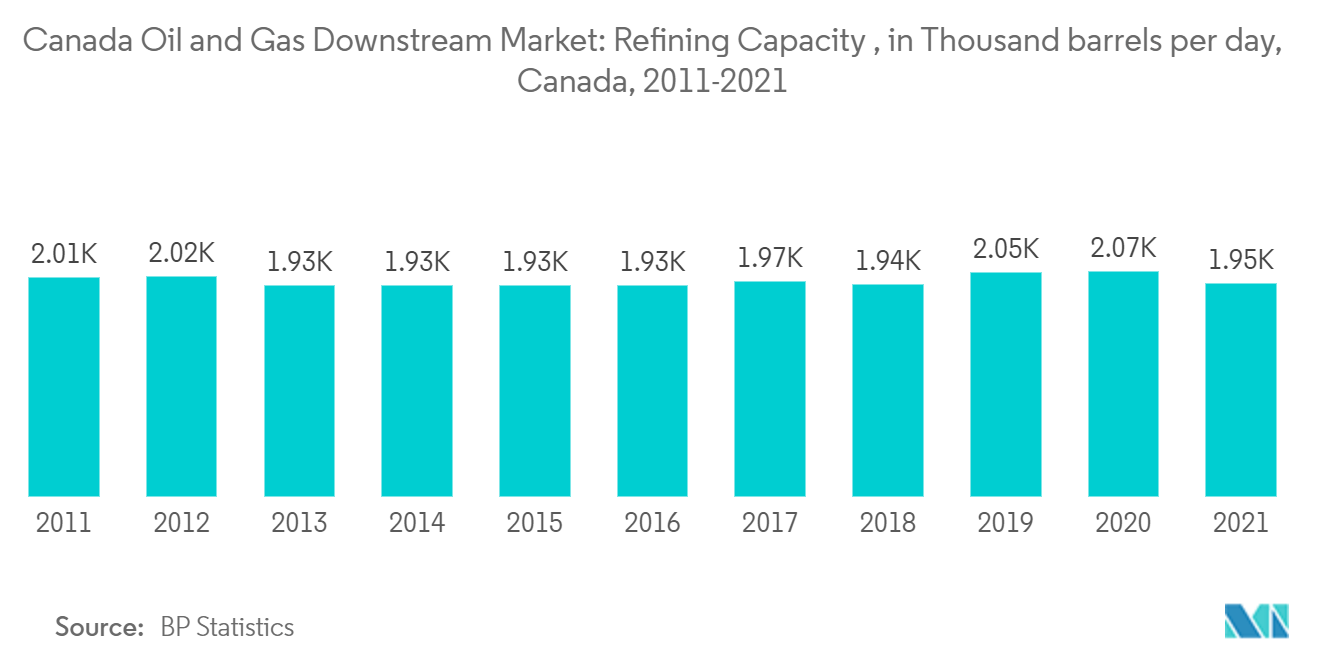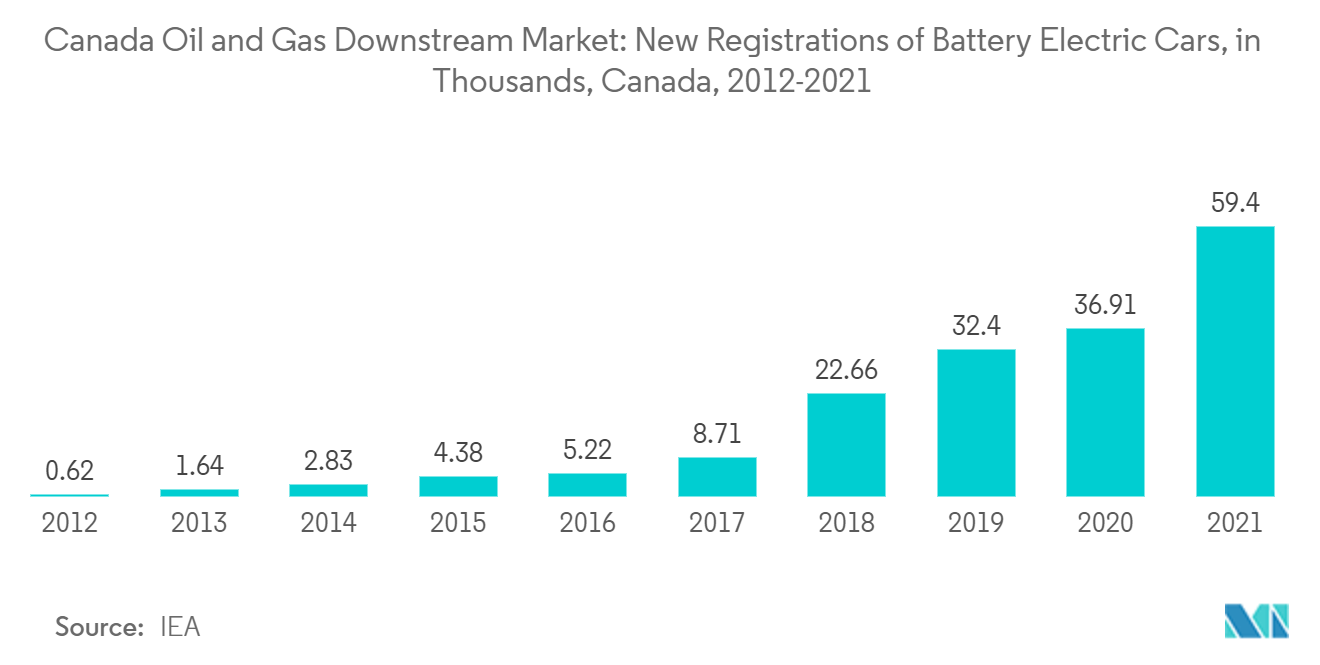Market Trends of Canada Oil and Gas Downstream Industry
This section covers the major market trends shaping the Canada Oil & Gas Downstream Market according to our research experts:
Canada’s Refining Sector is Expected to Dominate the Market
- According to the Canadian Association for Petroleum Producers (CAPP), as of 2021, Canada had 17 refineries in total. Eastern Canada's eight refineries have 1.2 million b/d, and Western Canada's nine refineries have a total capacity of 748,000 b/d. Processing and purifying raw crude oil and selling and transporting refined products completes the life cycle of the downstream oil and gas industry.
- Fertilizers and pesticides made for the agriculture industry, fuel oils made for the automotive industry, plastics, lubricants, and synthetic rubber made for the processing industries, and complex chemicals made for the pharmaceutical industries are all dependent on the supply by the downstream oil and gas sector.
- As of 2021, Canada's total refining capacity was 1,954 thousand barrels per day. Quebec and Atlantic Canada had the most refining capacity at 782 Mb/d, followed by western Canada at 686 Mb/d and Ontario at 390 Mb/d.
- As of 2021, there were no new refineries in the country, and the refining capacity almost remained constant until 2019. The USD 9.7 billion worth of Sturgeon refinery that came online in 2020 pushed the country's refining capacity by approximately 5.3% over the previous year's value. With the completion of the Sturgeon refinery, the total number of refineries in Canada stood at 17 by the end of 2021.
- In July 2022, Irving Oil announced plans to expand its hydrogen capacity at its Saint John refinery, enabling the company to offer hydrogen fuelling infrastructure throughout Atlantic Canada, making it the first company in its region to do so. As a result of formalizing an agreement to purchase a hydrogen electrolyzer, Irving Oil will be the first oil refinery in Canada and one of the first in North America to invest in such a clean energy solution.
- Such investments in the refining sector are expected to grow significantly and bring several projects online, thereby driving the market.

Growing Fleet of EVs is Expected to Hinder the Market Growth
- Technology change and government policies to encourage EV adoption are the most uncertain factors affecting the market's growth. Government policies incentivizing or mandating EVs or alternatives are likely to reduce oil demand.
- Canada's EV industry is expected to grow by 28% yearly, paving the way for a cleaner future. Various policies and incentives, lower vehicle prices, increased driving range, faster charging times, and zero emissions are expected to boost up EV market.
- Canada's EV industry continues to grow in areas like battery development and manufacturing, power train and systems integration, clean electricity production, and mining.
- Canada has a Zero-Emission Vehicle target of 10% of light-duty vehicle sales by 2025, 30% by 2030, and 100% by 2040.
- During 2021, the number of battery electric cars sold in Canada (often referred to as BEVs) increased by about 59,400 units, a significant increase of approximately 61% since the previous year, when 36,900 units were registered.
- The aforementioned factors are expected to hinder the growth of the conventional IC engine-based vehicles market, which, in turn, is expected to impact petroleum products such as diesel and petrol directly.

